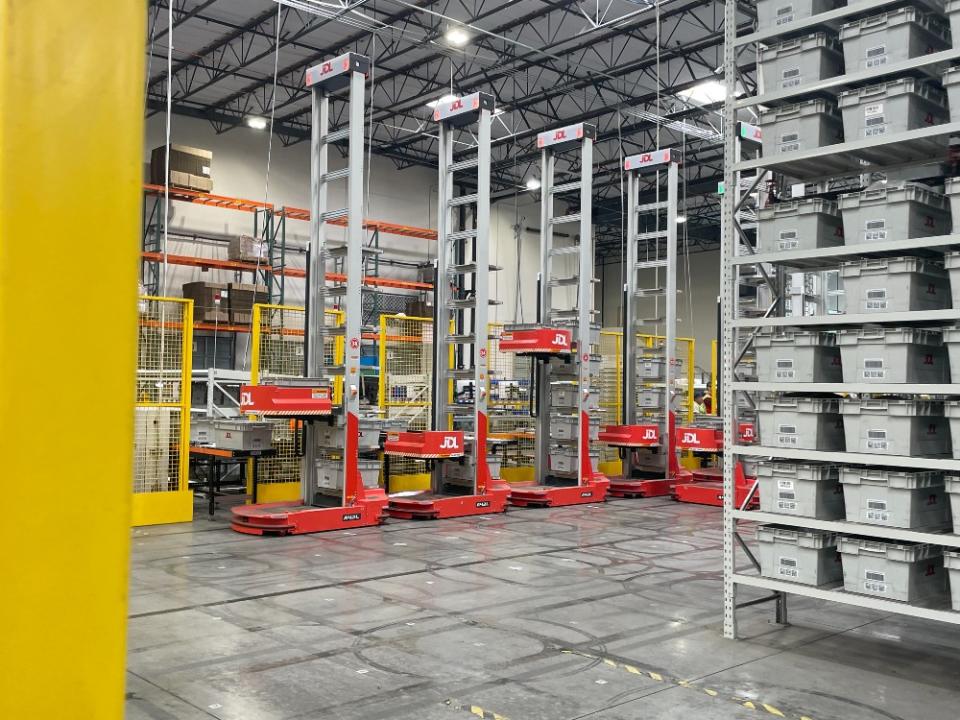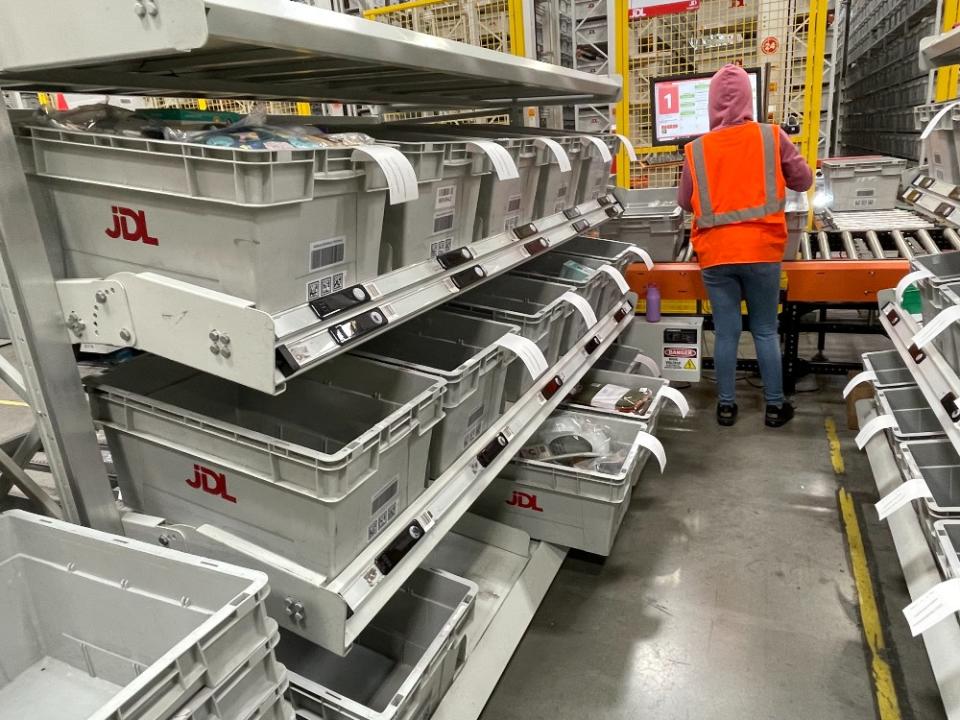JD.Com Squares Up Against Amazon in US Logistics Arms Race

Chinese e-commerce juggernaut JD.com is going toe-to-toe with Amazon in a fight to dominate logistics.
Known throughout the Asian market as one of the leading online marketplaces, JD.com has operated its own logistics arm since 2007. Now, the company is hoping to leverage the capabilities of its robust, end-to-end logistics infrastructure to serve U.S. enterprises, striking at a moment when many are still reeling from the effects of the Covid crisis.
More from Sourcing Journal
JD Logistics launched its first U.S. automated warehouse on the outskirts of Los Angeles during the height of the pandemic, and has since opened two similar operations nearby as demand for warehousing and logistics support grows. Home to the nation’s busiest ports, the L.A. market was a natural fit for the firm’s first stateside outpost, the group’s North American head of supply chain, Gordon Lu, told Sourcing Journal—and its experience there planted the seed for countrywide expansion.

“We are among the few third-party logistics companies that not only provides fulfillment services, but transfer and cross-border delivery,” the executive said. The group can manage freight forwarding, customs brokering, warehousing and delivery to both physical retail locations and the end consumer. But much of the consumer experience comes down to the last mile—and shoppers have become accustomed to speedy shipping.
“People who purchase stuff online always want to get their product as soon as possible—no matter what category, what kind of product, whether it’s a necessity or not,” he said. Automating processes helps drive JD Logistics’ efficiency at a number of its warehouses, and the company is seeking to make a name for itself by providing same-day shipping on a number of items from household-name brands.
One of the firm’s most advanced locations is its second. Located in Fontana, Calif., the 200,000-square-foot facility specializes in the storage and fulfillment of small items like cosmetics and personal care products, soft goods like apparel, and larger gear like children’s car seats. The location employs 70 workers and 60 robots, which whiz across the concrete picking and restocking bins from 12 rows of shelving that nearly reach the warehouse ceiling.

Each bin contains up to several SKUs, and is labeled using a QR code that lets the robot know what’s inside. As orders come in, the robots deliver the corresponding bins to human workers who pull and pack products for shipment. The average order takes less than two minutes to pull and sort, and about 40,000 packages are dispatched daily. According to Lu, the warehouse will take on new orders up until 3 p.m.—one hour longer than most—for same-day delivery. “We extend that cutoff time so [clients] can receive more orders,” he added, pointing what could be a merchant’s competitive advantage.
Many companies could use a boost as they deal with stagnant inventory and tepid consumer demand. Lu said the average turnover time for inventory is less than 30 days on JD’s warehouse shelves, which is about half the time that most clients reported before working with the firm. “We use operational data to optimize our efficiency, and also we share the data with our clients,” Lu said, from “which products are slow-moving, to what the hot SKUs are.” This information can help guide replenishment and even production, while giving brands a read on which items should be discounted or offered as part of a promotion to help move them off shelves.

Earlier this month, JD Logistics announced the opening of its third California facility in City of Industry, which will house similar automated technologies. In addition to the Golden State warehouses, the company also operates two facilities in New Jersey and one in Georgia, opened in the past three years. According to Lu, the goal is to enable brands to deploy inventory to locations across the country that are close to its end consumers.
The 60 U.S. brands that JD Logistics works with “need that same-day fulfillment and delivery—but they also need to think about costs,” Lu said. “That’s why we don’t want our merchants to ship from one location—we want them to allocate inventory to multiple locations, and ship from the one that best meets their customers’ needs.” While JD Logistics operates just six U.S. warehouses to date, compared with 1,500 in China and about 90 internationally, it continually evaluates new markets for U.S. expansion as a part of its larger vision for global markets, Lu said. A strong presence here will help strengthen its cross-border capabilities, making it an ever-more appealing partner for U.S. brands looking to bring in product from overseas.

And unlike e-commerce behemoth Amazon—which operates a logistics arm to service its orders and those of its third-party sellers—JD Logistics clients don’t need to sell on its marketplace in order to utilize its supply chain. In fact, Lu said the company prides itself on personalization, using a brand’s own packaging to drop ship items and even gift-wrapping goods as a part of promotions or special requests. At the warehouse last week, workers could be seen wrapping products in colorful tissue paper before packing them in pink cardboard mailers which Lu speculated could be part of a brand’s Mother’s Day campaign. The company also offers repackaging and light refurbishment services for returns and damaged items including electronics, so brands don’t have to send them back to their overseas manufacturers for repairs.
Lu declined to say whether JD Logistics plans to take on Amazon with its own fleet of delivery vehicles anytime soon, as the company currently relies on partnerships with local and national mail providers, like USPS, UPS and FedEx.

